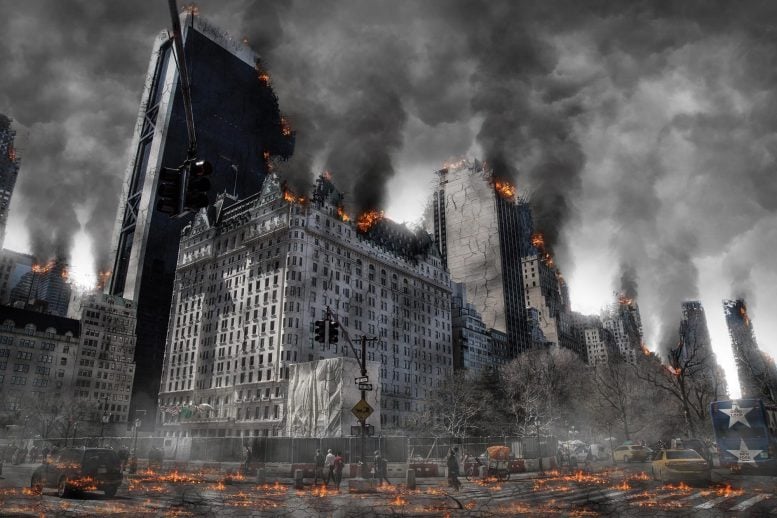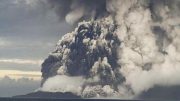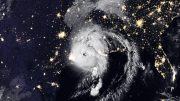
The research found that households led by women, people with children under age 18, people of low socioeconomic status, African Americans, renters, and Asians were all more likely to be unprepared for disasters.
A new study identifies “socially vulnerable” people who are not prepared.
Which Americans are least likely to be ready to respond when confronted with calamities like hurricanes, floods, and wildfires? A recent national study reveals an answer to this question.
Researchers discovered that households led by women, those with young children (under 18), renters, those of poor socioeconomic status, African Americans, and Asians were all less likely than others to be at least minimally prepared for disasters.
Smitha Rao, the lead author of the study and associate professor of social work at The Ohio State University, stated that people in these categories need special attention prior to disasters to ensure that they have the resources required to respond.
“Focusing on vulnerable groups, understanding their specific barriers, and connecting them to resources within the community are key strategies to ensure no one is left behind when disaster strikes,” Rao said.
The study was recently published in the International Journal of Disaster Risk Reduction. Other co-authors were Fiona Doherty, a doctoral student in social work at Ohio State, and Samantha Teixeira, associate professor of social work at Boston College.
Data from the 2018 Federal Emergency Management Agency National Household Survey was used by the researchers. 4,743 respondents from all around the nation made up the survey’s nationally representative sample, and they answered a number of questions regarding how well-prepared they were for disasters. According to Rao, the importance of the problem is rising in the United States.
According to a federal government report, 2021 came in second to 2020 in terms of the number of billion-dollar disasters that occurred in the United States (20 in 2021, compared to 22 in 2020). The fact that there were 123 distinct billion-dollar disasters in the 2010s as opposed to just 29 in the 1980s is even more concerning.
“For many Americans, it is not a question of if you’re going to be impacted by a disaster, but when,” she said.
For the new study, Rao and her colleagues considered people ‘minimally prepared’ if they had the most essential elements necessary for immediate evacuation or sheltering in place for three days. These included emergency funds, access to supplies to get through three days without power or running water, and access to transportation.
“It really is just the minimum. We should all have a ‘go bag’ with non-perishable foods, important medications, a flashlight, and some emergency cash,” she said.
In addition to looking at the preparation status of socially vulnerable groups, the researchers also examined socio-cognitive factors that could be associated with preparedness.
Results showed that a belief in the usefulness of preparing for disasters was associated with being at least adequately prepared. Those who had less confidence in their personal ability to act in the face of an emergency were less likely to be minimally prepared.
“Confidence was an important aspect of being prepared. We can’t tell for sure from these data, but part of this may be how much confidence they have that government institutions will help them when necessary,” Rao said. “Socially vulnerable groups that we found were less likely to be minimally prepared may also lack confidence in institutions that are supposed to help during disasters.”
It was no surprise that lower socioeconomic groups were less likely to be prepared for disasters, she said. Those who are struggling to meet day-to-day needs often don’t have the ability and resources to plan for everyday events, let alone for disasters, Rao said.
But the findings showed that even a slight jump from the lowest income group was associated with a higher readiness score in the study’s sample. Another key finding was that those survey participants who had received information related to disaster preparedness within the last six months were more likely to be prepared.
“But more than half of the sample – 56% – reported not receiving any information on preparedness in the past six months, so this is an important area of intervention,” Rao said.
Overall, the results suggest that social workers and other health and helping professionals should work specifically with the groups identified in this study to help them become prepared before disasters occur.
“Disasters don’t affect everyone evenly,” Rao said. “We need to find ways to help those who are most at risk of the consequences of disasters.”
Reference: “Are you prepared? Efficacy, contextual vulnerability, and disaster readiness” by Smitha Rao, Fiona C. Doherty and Samantha Teixeira, 30 May 2022, International Journal of Disaster Risk Reduction.
DOI: 10.1016/j.ijdrr.2022.103072









Be the first to comment on "Researchers Reveal That These 6 Types of People Are Least Likely To Be Prepared for Disaster"